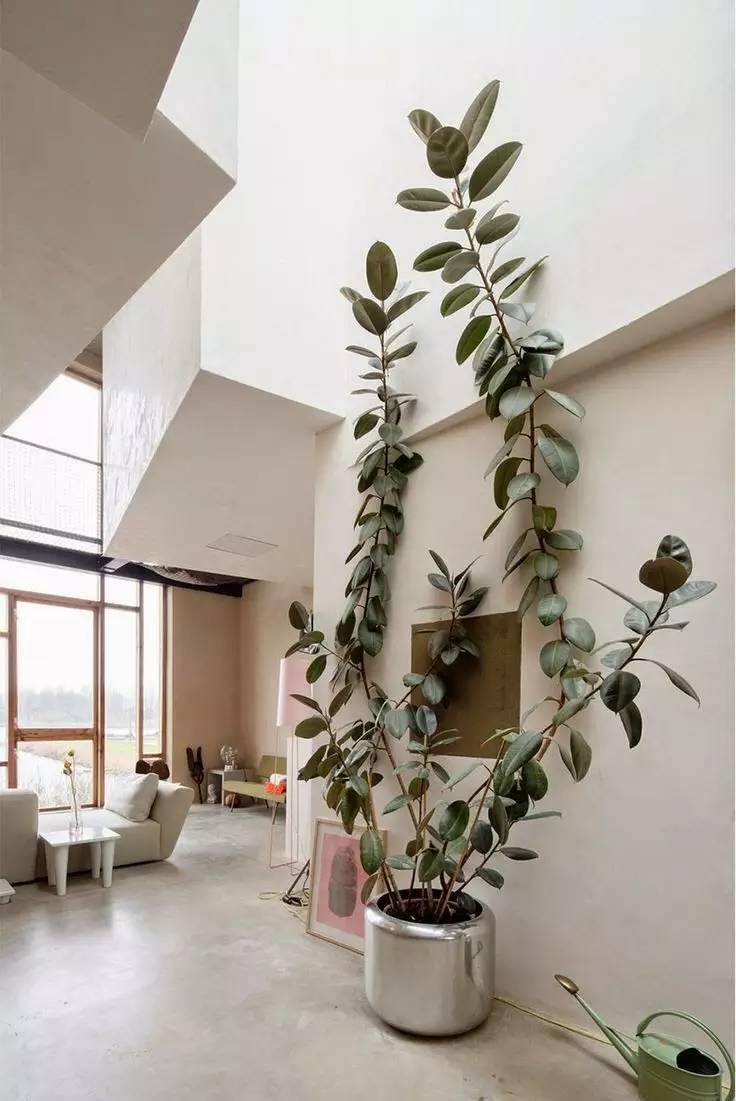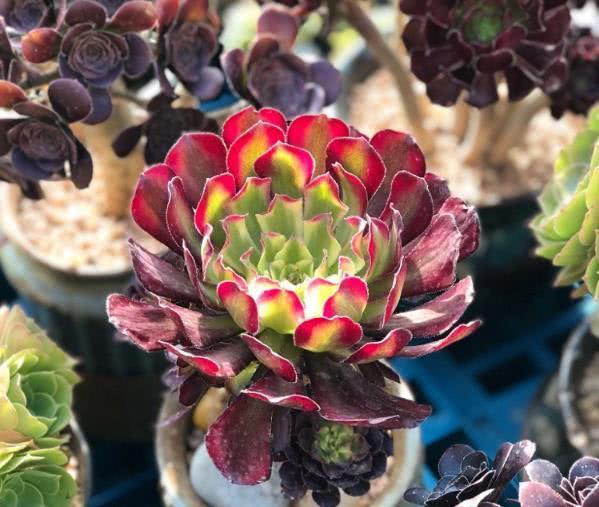Don't worry about not being able to live, but be afraid of growing too tall. This tree is the most suitable for lazy people.

The leaves of the rubber tree are as big as the palm of the hand, even bigger than the palm of the hand, and thick as rubber. The leaves of the rubber tree look a little black and oily, but the buds it pulls out are red. In fact, the sense of beauty is not as good as that of the cherub Chunyu, and the shape is not as good as the fir leaf banyan, but in terms of growth speed, worry-free and easy to raise, the rubber tree is awesome!
Understand the change and maintenance of rubber trees in four seasons!
Rubber tree leaves are thick and bright, like water and shade, but avoid waterlogging, keep the basin soil moist in spring, and move it to semi-light or astigmatism as the temperature rises. In addition, it is most suitable to change the basin in spring, and you can start to prepare a new basin at about 15 ℃.
In summer, rubber trees are strong and resistant to the hot sun. But when the light is too strong, the leaves will lose their luster and be overshadowed. At the same time, the rubber tree needs a large amount of water at this time, so keep the basin soil moist and increase the number of sprinklers as appropriate.
The leaves of rubber trees are many and large, and the water consumption is large. Autumn drying should replenish water in time and spray more to its leaves and all around to meet its requirements for air humidity. In autumn, in order to enhance its cold resistance, it can adapt to outdoor low temperature for a period of time, but can not let it suffer frost damage.
When the temperature drops in winter, rubber trees are not resistant to cold. About 5 ℃, the growth stagnates, enters the dormancy state, should guarantee the sufficient light, causes the basin soil to be dry.
The rubber tree is too tall, with sparse leaves and a single stick!
The top advantage of the rubber tree is strong, if not pruned, the terminal bud continues to germinate, the trunk grows higher and higher, the axillary bud is in a latent state for a long time, and becomes a thin and tall single pole, which is very ugly.
When the rubber tree grows to 30cm to 50cm high, it is extremely important to control the height. if the height is too high, it will cause the shape of the whole tree to show a top-heavy embarrassment, which will affect the ornamental. According to the diameter of the flowerpot, the closer the better, it is better to be low than high.
The height is suitable to directly remove the top buds from the branches, and the top growth advantage is eliminated, making the lateral branches germinate faster and more easily. If it is too high, it is necessary to use short cutting and sprouting methods to make up for and improve the lack of modeling.
After the terminal bud is removed, several lateral branches can be sent out at the same time, and 3-5 lateral branches are suitable to be used as backbone branches. when they grow to a certain height, they will be cut short, and three more branches will be left on each backbone branch after germination to form a basic tree shape.
In addition, pay attention to apply incense ash or sealing wax on the wound after pruning to ensure that the juice will not be lost too much and affect the growth state.
Rubber trees are growing rapidly, and "nutrition" must keep up.
For foliage plants like rubber trees, most of them use nitrogen fertilizer as the main fertilizer. Nitrogen fertilizer provides chlorophyll and protein for rubber trees, enhances photosynthesis and promotes the vegetative growth of leaves and stems. It is best to choose compound fertilizer, the nutrients are more balanced, the soil permeability is better, and the fertilizer effect is long, but also can improve the soil.
When using compound fertilizer, rubber trees can be diluted with water and irrigated, or they can be shallowly buried around the plant to avoid the rhizome. After using the compound fertilizer, the leaves of the rubber tree will shine, and the plant will be relatively strong.
In addition, you can choose potassium dihydrogen phosphate. Phosphorus and potassium fertilizer can buffer the change of soil acid and base, stabilize the pH value of soil, promote the growth and reproduction of beneficial bacteria, make the root system of rubber tree developed, the leaf is thick and green, the stem is stout, and the disease resistance and stress resistance are enhanced.
The effect of foliar spraying of potassium dihydrogen phosphate on rubber trees is better than that of root irrigation, the absorption of young leaves is stronger than that of old leaves, the back of leaves is stronger than the front, and the tender shoots can also be absorbed. When foliar spraying, the absorption and utilization rate is as high as 80% to 90%!
They are all rubber trees, and pattern renovations emerge one after another!
Hevea brasiliensis has green leaves with yellow-white irregular patches, but its growth is slower than that of other varieties.
White-spotted rubber tree with narrow leaves and many white patches with white lines and alternating white and green.
Black King Kong rubber tree, a round leaf type, dark green leaves, with black-green luster, is one of the common varieties.
Welcome to follow the plant fans, and squirrel Mr. infatuated with flowers and plants, okay?
- Prev

The days accompanied by vanilla must also be fragrant.
Brainstorm you have 40 friends to follow the official account! / / A kind of vanilla has a mood / / vanilla is a kind of plant that can smell fragrance at the mention of its name. Why do you like it? It looks ordinary, and there are no bright flowers.
- Next

The sudden wilting of the leaves of succulent plants may be caused by the soil.
With the gradual rise of temperature, succulent plants often soften, which makes succulent control people very anxious, in fact, there are many reasons for this situation, flower friends encounter their own fleshy leaves become soft, do not worry, to check the reasons.
Related
- Wuhan Hospital Iron Tree Blooming Result Was Instantly Frightened by the Gardener Master
- Which variety of camellia is the most fragrant and best? Which one do you like best?
- What is the small blue coat, the breeding methods and matters needing attention of the succulent plant
- Dormancy time and maintenance management of succulent plants during dormancy
- Minas succulent how to raise, Minas succulent plant pictures
- What are the varieties of winter succulent plants
- How to raise succulent plants in twelve rolls? let's take a look at some experience of breeding twelve rolls.
- Attention should be paid to water control for succulent plants during dormant period (winter and summer)
- Watering experience of twelve rolls of succulent plants
- Techniques for fertilizing succulent plants. An article will let you know how to fertilize succulent plants.

